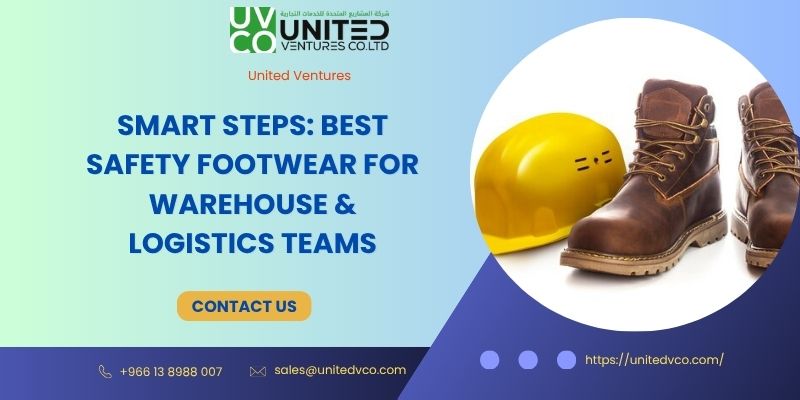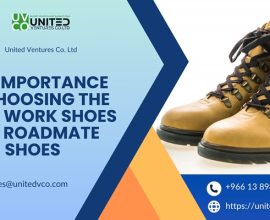
Every step counts when you’re managing a fast-paced warehouse or logistics operation. Whether it’s lifting crates, driving forklifts, or loading trucks, one wrong move or the wrong pair of shoes can lead to serious injury. That’s why investing in high-quality safety shoes wholesale is not just a matter of compliance; it’s a matter of keeping your team safe, efficient, and confident on the job.
Why Foot Safety Matters in Warehousing and Logistics?
Warehouses and logistics hubs are environments where heavy machinery, sharp tools, and fast-moving vehicles coexist. According to the Occupational Safety and Health Administration (OSHA), thousands of workers suffer foot injuries each year many of which could be prevented with proper footwear. From crush hazards to slips and chemical spills, the risks are real and constant.
Think about it: an operator stepping off a forklift, a packer carrying metal crates, or a driver moving through oil-slick floors. In each scenario, sturdy, purpose-built footwear can mean the difference between a minor slip and a major injury. That’s the unseen power of well-chosen safety footwear.
Key Features Every Warehouse Safety Shoe Should Have
Not all work boots are created equal. The right pair for a logistics or warehouse team must balance protection, comfort, and mobility. Here’s what matters most:
- Toe Protection: Steel or composite toe caps prevent injuries from falling objects or compression.
- Slip-Resistant Soles: Essential for oily or wet floors commonly found in loading areas.
- Shock Absorption: Cushioned insoles reduce fatigue during long hours on concrete surfaces.
- Breathability: Ventilated designs keep feet cool and dry, reducing odor and blisters.
- Electrical Resistance: For teams working around electrical systems, anti-static protection is a must.
Modern designs go beyond basic safety they integrate ergonomic features and lightweight materials that help workers move freely and stay comfortable throughout their shifts.
Types of Safety Footwear Ideal for Logistics Teams
Depending on your work environment, certain types of safety footwear perform better than others. Here’s a quick breakdown:
- Steel Toe Boots: Traditional but reliable. Best for heavy-duty zones where falling objects are common.
- Composite Toe Shoes: Lightweight, metal-free, and suitable for environments requiring non-conductive materials.
- Slip-On Safety Shoes: Convenient for drivers and warehouse workers needing quick mobility.
- Waterproof Safety Boots: Ideal for outdoor or cold storage areas where moisture is a concern.
In many logistics operations, a mix of these styles ensures complete coverage for different roles within the team.
Comfort and Performance: The Unsung Heroes of Productivity
Comfort may sound secondary, but for workers who stand or walk 8–10 hours a day, it’s vital. Studies by the American Podiatric Medical Association (APMA) highlight that poor footwear contributes to fatigue, reduced concentration, and long-term musculoskeletal issues. Simply put, comfortable shoes mean fewer accidents and better output.
When selecting safety footwear, think beyond protection look for designs that support posture, improve grip, and reduce strain. This investment pays off in fewer sick days and greater team morale.
Balancing Safety, Style, and Savings
Many companies today prefer sourcing through foot protection partners that provide bulk or wholesale options. Buying in volume not only ensures consistent quality across the workforce but also reduces overall procurement costs. Plus, modern safety footwear looks better than ever—sleek designs and color variations mean workers no longer have to sacrifice style for safety.
For a deeper look at selecting the right gear, check out Step Safe: The Importance of Foot Protection and Choosing the Right Gear, which explores how to match safety levels with specific workplace risks.
How to Maintain Safety Footwear for Long-Term Use?
Even the toughest boots need care. Here are a few quick tips to extend their life and keep performance top-notch:
- Clean shoes daily to remove dirt, oil, and chemicals that can weaken materials.
- Air-dry after shifts to prevent moisture buildup and odor.
- Check soles and toe caps regularly for wear and tear.
- Replace insoles every 6–8 months for sustained comfort and hygiene.
Simple maintenance not only saves money but also keeps the footwear’s safety features intact over time.
FAQs on Safety Footwear for Warehousing and Logistics
1. What safety standard should warehouse shoes meet?
Warehouse safety shoes should comply with ASTM or EN ISO standards to ensure adequate toe protection, slip resistance, and electrical safety.
2. Are steel toe boots better than composite toe shoes?
Both are effective. Steel toe boots offer higher impact resistance, while composite toe shoes are lighter and better for extended wear in non-metal environments.
3. How often should warehouse safety shoes be replaced?
Typically every 12–18 months, or sooner if you notice sole wear, damaged toe caps, or reduced grip.
4. Can safety shoes be both comfortable and protective?
Yes. Modern designs focus on ergonomic cushioning, breathable materials, and flexible soles, combining safety with all-day comfort.
Final Thoughts
Safety footwear isn’t just another line item in a warehouse budget it’s a foundation for worker wellbeing and productivity. The right pair protects, supports, and empowers your team to move confidently, no matter how demanding the day gets. When safety meets comfort, performance naturally follows.

